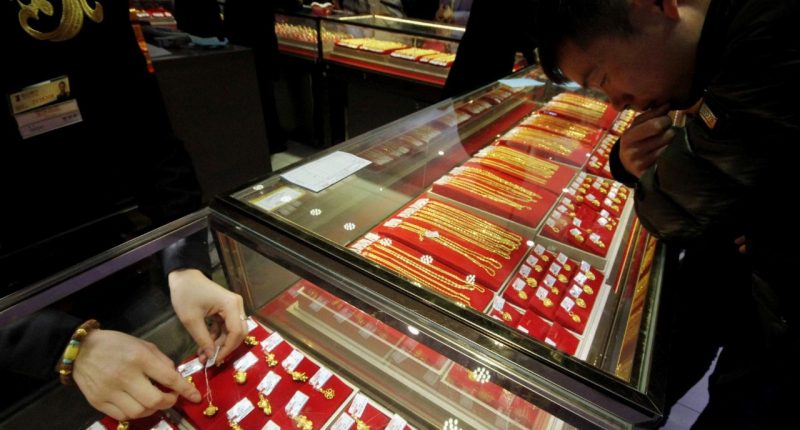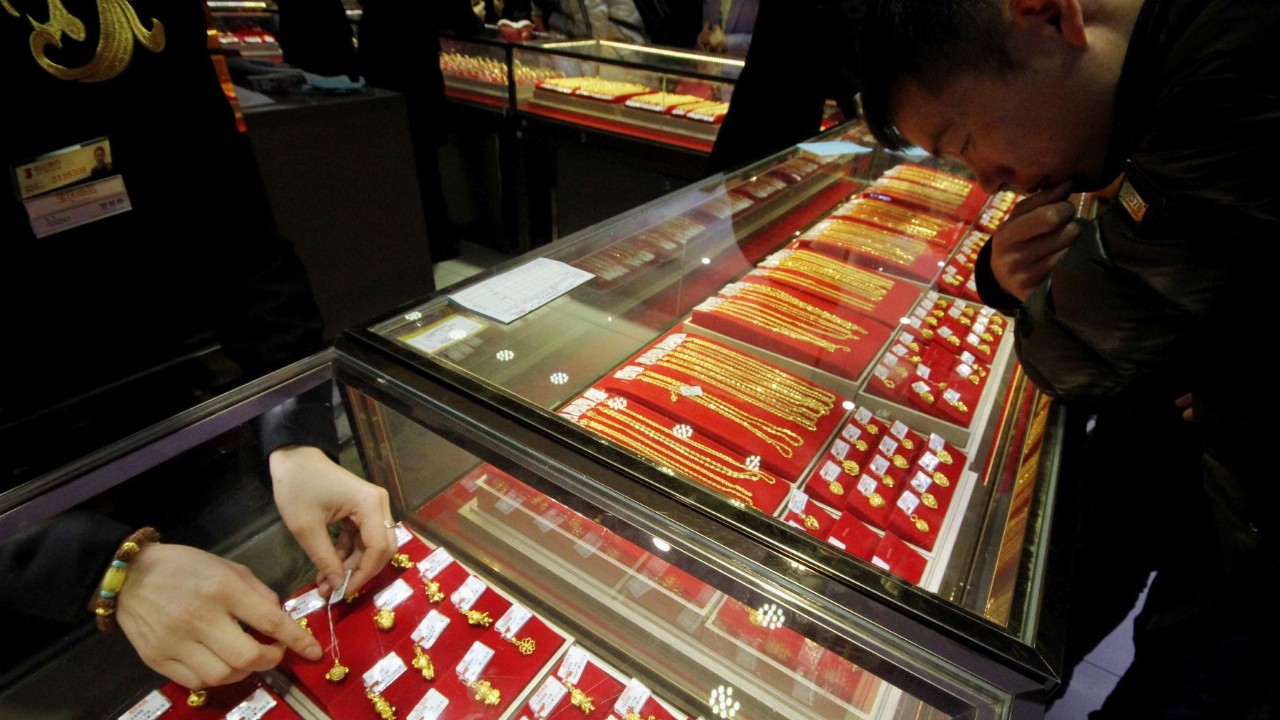- With a softening U.S. dollar and a pull-back in U.S. Treasury yields, gold prices hit a seven-week high on Friday and were on track for their best week since mid-December
- Spot gold was up two per cent during the week while U.S. gold futures settled 0.8 per cent higher at US$1780.20 (roughly A$2306.56)
- The rise came despite strong U.S. retail sales data and a substantial drop in weekly jobless reports
- With a recovering economy, China has also given both domestic and international banks permission to import large amounts of gold into the country
- Since February last year, China’s monthly imports have fallen to around 10 tonnes, compared to an average of 75 tonnes per month in 2019
With a softening U.S. dollar and a pull-back in U.S. Treasury yields, gold prices hit a seven-week high on Friday and were on track for their best week since mid-December.
Spot gold was up two per cent during the week while U.S. gold futures settled 0.8 per cent higher at US$1780.20 (roughly A$2306.56).
“The macro argument for gold has also improved. We are poised for a run towards US$1800 [roughly A$2332.21],” said Edward Maya, senior market analyst at OANDA.
“We’ve had many investors abandon some positions because of some extreme technical selling we saw with Treasury yields and that has really provided a strong backdrop here for gold prices to continue to appreciate.”
The rise came despite strong U.S. retail sales data and a substantial drop in weekly jobless reports.
Meanwhile, the drop in 10-year U.S. Treasury yields below the 1.6 per cent mark “has allowed spot gold to break above its 50-day simple moving average (SMA) for the first time since early February,” FXTM Market Analyst Han Tan said in a note.
On the physical front, China — as the world’s biggest gold consumer — has given both domestic and international banks permission to import large amounts of gold into the country, according to Reuters, which cited five sources familiar with the matter.
China consumes hundreds of tonnes of gold worth tens of billions each year, but its imports took a hit as COVID-19 spread and local demand dried up.
But that seems to be changing, thanks to a rapidly recovering economy that’s revived the country’s jewellery industry and sent domestic gold prices above global benchmark rates, thereby making bullion imports more profitable.
Approximately 150 tonnes of gold, worth US$8.5 billion (roughly A$11 billion), are likely to be shipped following the green light from Beijing, with two sources saying it would arrive in April and another two saying the imports would be spread over April and May.
China’s gold imports typically come from Australia, South Africa and Switzerland, and are regulated by the People’s Bank of China — the country’s central bank — through a system of quotas given to commercial banks.
“We had no quotas for a while. Now we are getting them … the most since 2019,” said a source at one of the banks.
It signals a dramatic return to the global bullion market. In 2019, gold imports ran at about US$3.5 billion (roughly A$4.53 billion) a month, or around 75 tonnes. Since February last year, however, imports fell to around US$600 million (roughly A$777.4 million) a month, or about 10 tonnes, according to Chinese customs data.
Nevertheless, China’s absence had little impact on gold prices early in the pandemic, with Western investors — fearful of an economic collapse — stockpiling the safe-haven metal and driving it to a record high of US$2072.50 (roughly A$2685.28) per ounce.
But with an influx of vaccines and government stimulus measures, that interest eventually waned and gold prices have since dropped to around US$1750 (roughly A$2267.43) an ounce.
Like China, India’s gold imports have also rebounded, hitting a record high of 160 tonnes in March.
Collectively, the two countries account for about 20 per cent of the world’s annual demand for gold, and their recovery is considered “critical in setting the floor for gold,” said Suki Cooper, an analyst at Standard Chartered, adding that their strength should stop gold prices from falling further over the coming months.








